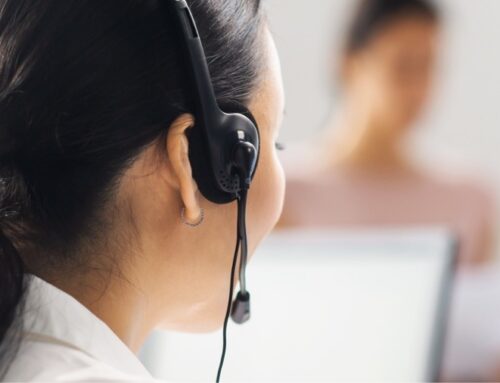By Prof. Patrick Schoettker, Chief Medical Advisor for Biospectal |
 A fingertip can tell us a lot about the human body. We’ve seen just how much it can tell us as patients started tracking and monitoring their health using readily available technology during the COVID-19 pandemic — a shift that jump-started the larger move to remote patient monitoring (RPM). RPM extends the reach of health care professionals, and improves patient care by giving access to continuous, real-time health data that helps doctors better understand each patient’s health.
A fingertip can tell us a lot about the human body. We’ve seen just how much it can tell us as patients started tracking and monitoring their health using readily available technology during the COVID-19 pandemic — a shift that jump-started the larger move to remote patient monitoring (RPM). RPM extends the reach of health care professionals, and improves patient care by giving access to continuous, real-time health data that helps doctors better understand each patient’s health.
The rapid onset of the pandemic and subsequent move to telehealth that followed necessitated that people take control of their own medical monitoring and engaging with their own data gathering and management – in short, to become participants in their own care regimen – which drove pulse oximeters, for example, to fly off the shelves. Pulse oximeter devices transmit light through the fingertip to determine oxygen saturation in blood and pulse rate and detect instantly if you are getting enough air into your bloodstream or if you might require a trip to the hospital — a critical indicator for those with COVID-19. Demand for pulse oximeters spiked so significantly in the first few months of the pandemic that many people who tried to buy one online or from their local pharmacy couldn’t find them.
Pulse oximeters aren’t the only tools that allow patients to see “inside” of their body via their fingertips. Several new devices – and more in the works – take advantage of the fingertip to reveal critical details to patients about their own health. Here are three places fingertips are at the forefront.
1. Blood Pressure Monitoring
Patients can use their finger tip to measure their blood pressure, eliminating the need for bulky blood pressure cuffs. Measuring blood pressure via a fingertip is discrete, accurate, and easy without a bulky, noisy, uncomfortable traditional blood pressure cuff. Here’s how it works. The camera lens in your smartphone optically measures blood flow by “looking” through the skin. An algorithm then turns light information into blood pressure values that have been clinically validated to be as accurate as a sphygmomanometer, aka blood pressure cuff. This fingertip-based technology allows users to measure and monitor their blood pressure in their ‘natural’ environment at the best place and time for them — and ideally when they are not stressed: for example, in their living room, office, backyard or while traveling. Ultimately, this type of technology offers patients an easy-to-use, always available, connected means to accurately measure, monitor, track and also share their blood pressure data with doctors. It provides a more detailed, living portrait of their blood pressure rather than a single, unreliable reading in an office. (Disclosure: I’m the Chief Medical Advisor for Biospectal, a remote patient monitoring and optical biosensing software that offers optical blood pressure monitoring via a smartphone app).
2. Optical Glucose Measurement
Blood pressure readings aren’t the only measurement possible using a camera. Researchers are investigating how a smartphone camera could potentially also measure optically through the skin to capture blood glucose accurately, which would support management of diabetes without painful skin pricks and blood draws. All patients would need to do is put their finger on a smartphone camera lens for a quick reading, which could also be used for long term analysis. The science works similar to optical blood pressure technology, except an algorithm is trained to identify blood sugar levels instead of blood pressure. Several papers have looked at the possibilities of this novel approach. Early research has indicated that the technology could be virtually as accurate as blood draws.
3. Micro-needles
Diabetic patients and others who need to draw blood to monitor health conditions routinely could have better “fingertip” options in the future. Researchers are looking at the use of tiny needles on a patch that you can’t see and don’t feel to extract micro drops of blood. Patients or doctors could then test that blood for blood sugar levels, electrolytes, and more. All you’d need to do is touch your finger – no discomfort, anxiety or visible blood required.
Scientists and medtech companies aren’t just looking at fingertips to provide more accessible and robust tracking of health conditions. Cystic fibrosis, for example, affects the sweat glands and their content. Scientists are also looking at the possibility of collecting tiny drops of sweat to learn more about the human body. A novel handheld device called Lumen uses your breath to test your metabolism and see if you are burning carbohydrates or fat for fuel.
All of these developments are extraordinarily promising in terms of dramatically improving patient experience and capturing more frequent and detailed diagnostic information — not only for patients, but also for their doctors and caregivers. For patients, easier and better analyzed measurements , especially via a smartphone, offer a more effective way to self-monitor their health using a device they already carry in their pocket.
Global penetration of smartphones also provides unlimited opportunities for access across a variety of population and income levels, as well as to enable a global medical monitoring platform for better insights and, ultimately, health outcomes. For doctors, a convenient, low barrier to use solution at the fingertip provides an opportunity to collect more patient data that will help them make better health care decisions. The finger isn’t just a portal to see inside the body; it’s a means to rethink how we participate more in our personal healthcare and how the medical community provides even better healthcare.
 About the Author
About the Author
Prof. Patrick Schoettker is the original spark for Biospectal’s vision to become a revolutionary force in how we measure and manage patient outcomes through merging breakthrough optical biosensing technology with ubiquitous IoT devices. Dr. Schoettker is a professor specializing in Anesthesiology and Emergency medicine at CHUV and actively partners with CSEM to introduce and validate new medical technologies in the clinical setting in Lausanne. His focus of interest is bringing technology into the patient care setting in order to improve medical outcomes through improved efficacy, as well as better patient centered care factors relating to ease of use and comfort.
To support Biospectal’s imperative of achieving medical grade accuracy, Patrick plays a critical role to ensure that data acquired through innovative technology has been validated scientifically in a medical environment.
Prior to CHUV, where Dr. Schoettker rose to Head Physician in the Department of Anesthesiology of the Lausanne University Hospital, his medical training spanned the globe, taking him to France, Canada and Australia. In the process, he explored varying medical perspectives and practice methods across diverse academic and clinical environments. These experiences have proven a continuing influence in his boundary stretching outlook and human centered approach to medicine.
Dr. Schoettker is the author of more than forty scientific papers and editor of a best-selling medical textbook. He also claims numerous patents and inventions in the field of anesthesia, acute care medicine and wireless physiological signals acquisition and monitoring.












